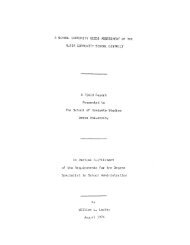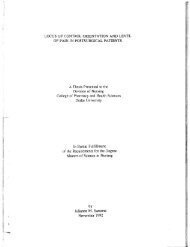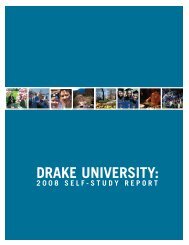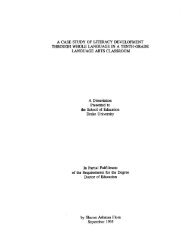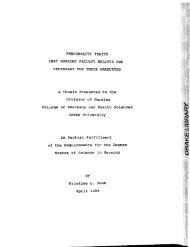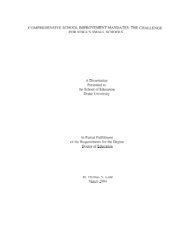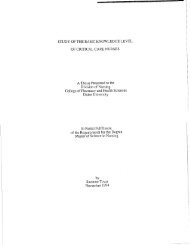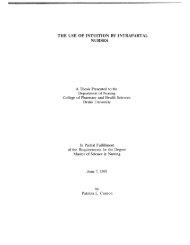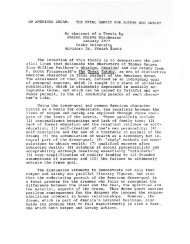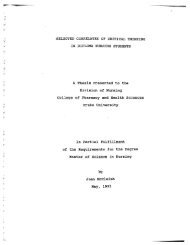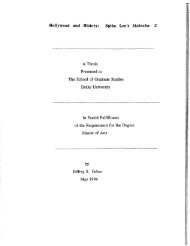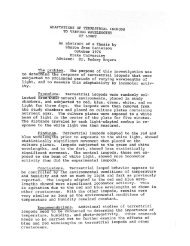LEADERSHIP CHARACTERISTICS OF ... - Drake University
LEADERSHIP CHARACTERISTICS OF ... - Drake University
LEADERSHIP CHARACTERISTICS OF ... - Drake University
You also want an ePaper? Increase the reach of your titles
YUMPU automatically turns print PDFs into web optimized ePapers that Google loves.
establish ground rules; (2) supportive: ieadership sensitive to<br />
subordinates' needs; (3) participative: decision-ma king leadership based<br />
on group consultation; and (4) achievementsriented: leadership to<br />
establish and attain high group goals.<br />
While the contingency theorists believed that the leader was the<br />
focus of leader-subordinate relationship, situational theorists believed that<br />
the subordinate played a more important role in defining the relationship.<br />
Situational leadership theory suggests that leadership style should be<br />
matched with the maturity of the subordinates. Paul Hersey and Kenneth<br />
Blanchard's Situational Leadership Model was first introduced in 1969.<br />
They theorized that there was no best way to lead and that leaders, to be<br />
effective, must be able to adapt to the situation and modify their leadership<br />
style between task-oriented and relationship-oriented (Hersey &<br />
Blanchard, 1977). They suggested that the maturity of the group or<br />
individual would determine the most effective leadership style.<br />
They developed the four leadership styles of telling, selling,<br />
participating, and delegating and advocated the importance of matching<br />
those styles with the subordinate's "maturity level" and the current task.<br />
The dynamic among these factors was based on the amount of guidance<br />
and direction (task behavior) and socio-emotional support (relationship<br />
behavior) required by the followers, and the readiness level (competence



